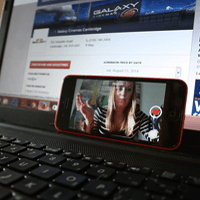What Live Video Formats Dominate Social Media?


Companies are increasingly turning to social media juggernauts like Twitter, Facebook, YouTube and Instagram to drive their marketing messages via live video. The rapid advances in Internet technology allow for real-time communication, live video streaming and instant sharing. High-speed Internet has been the single most disruptive force in marketing, upending convention and driving innovation like never before.
Leading from the front is Facebook, which laid the foundation by revolutionizing the way people communicate, interact and share stories with one another. Marketing companies have been quick to catch on to these dramatic technological advances, with live video streaming on top-tier social media sites. Ecommerce platforms routinely offer social media sharing options on G +, Facebook, Instagram and Twitter by default. With billions of people connected via social media, it makes sense that marketing departments target this as the new frontier.
Why Live Video Streams on Social?
There are many inherent benefits to focusing on an effective live video experience. Besides for the obvious benefits of real-time interaction with users, video can drive higher CTR (click through rates), ROI (return on investment) and conversions than many other forms of marketing content. Video is easily shared on social media, since all it takes is a click to exponentially increase views, reactions and drive viral appeal. Marketing departments with an eye on live video will do well to conduct in-depth analysis of social media analytics with their client base.
The benefits of live video are twofold: interactive appeal and increased urgency. Since live video streams in real-time, viewers are experiencing something that is being aired for the first time. This exclusivity generates buzz, attracts media attention and has significant newsworthy appeal. Nobody knows what is going to happen in a live video stream - it's that level of uncertainty, expectation and anticipation that evokes a 'moving' sensory appeal with viewers.

Since anyone can participate in live video streams on social media networks, it is inherently more enticing than television. Each person gets to contribute their opinion by way of comments, images or attachments. The audience interaction helps drive significant buzz, which feeds into the overall marketing message. The broadcaster of the live video is in an enviable position since he/she can gauge the pulse of the market, and user reaction and tailor marketing messages accordingly.
Which Social Media Platform Offers the Best Live Streaming Experience?
It all depends on your user base, technical specs and marketing preferences. Each of the social media titans offers many inherent benefits.
Twitter live videos are available courtesy of a live video streaming app known as Periscope. The Periscope acquisition, made it possible for all Twitter users to live stream on Periscope and Twitter. Twitter live streaming is ideal for short videos. If your marketing message can be transmitted quickly, and generate that wow reaction in no time at all, Twitter is ideal. Twitter makes it possible to live stream direct from the Twitter app. The live streaming video icon needs to be clicked, a title entered and then the 'Go Live' button depressed. As with all major social media platforms, it is possible to see audience reaction with 140 character comments and emoticons.
Once the live Twitter video broadcast has ended, it will remain on the Twitter user's timeline. It is also stored on Periscope, regardless of whether the Twitter user has an account registered there or not. The benefits of live streaming on Twitter include the dual availability of the content on Twitter and Periscope, and easy identification of users based on specific geographic targeting. However, one of the pitfalls of using Twitter for live streaming purposes is its lack of reach. Twitter pales in comparison to Facebook, with just 328 million MAUs (monthly active users).
The tech specs for Twitter live streaming require that uses stream from their smartphone. If the marketing initiative is being streamed from a GoPro device, the Twitter feed will have to be redirected via the Periscope app.
YouTube live videos are managed through encoding technology. Before you initiate a marketing campaign, you will be required to download a YouTube encoder. YouTube also offers additional services such as live chat functionality. This makes it possible for viewers to interact with one another, or for the uploader to interact with the viewers. With YouTube live video, the content will be archived once the broadcast has completed, but not the live chat functionality.
Facebook live videos are invariably the most popular option available for live streaming content today. Facebook is universally popular, with an estimated 1.94 billion MAUs. Facebook live video can initiate spontaneously, or in a scheduled format. Since Facebook users can comment on a live streaming broadcast, this is a great way to generate real-time feedback from a potentially huge audience. The technology allows you to find live streams anywhere on the map, courtesy of Facebook Live Map so viewers can start watching organically.
Marketers can easily track results of marketing messages, based on user reactions. Facebook has invested heavily in making this technology as user-friendly as possible. From a smartphone or tablet, uses simply need to click on the live video option to start a live stream. Since users can customize privacy options with respect to the audience, live streams can be limited to one individual or the public at large. While the video is live streaming, the broadcaster will be able to gauge viewer sentiment in real-time. Comments, reactions and emoticons will be displayed on the video.
Facebook live broadcasts can be as long as four hours, and they will be added to the user's account page. In terms of rankings, live video content displays prominently in newsfeeds. By default, all followers will be notified that one of their connections is live streaming unless they have adjusted their settings otherwise. Marketing departments typically prefer Facebook live video streaming as their top option. It allows for market segmentation, in-depth analytics, and it can reach a large global audience on social media. Some tech specs to bear in mind with Facebook live are the following:
- The video title can be a maximum of 255 characters
- Your video should be at least 10 minutes in duration (600 seconds), with a maximum of 4 hours
- The maximum bit rate of videos is 4 Mb per second with a resolution of 1280 x 720, or 30 FPS
Instagram live video is another popular option available to companies seeking to promote their products and services. What initially began as a photo sharing website has quickly been transformed into a live video platform with a large global audience thanks to its Stories feature. What's great about Instagram live is that the live video is removed once the viewer has seen it (they can re-view it up to 24 hours). Marketers can, however, also save photos and videos from their story or share them to Feed. The type of content that is best suited to Instagram live is material that is extremely vibrant and lighthearted. Instagram recommends using the platform for demos and chat-style video content.
To get started with Instagram live video, uses simply need to click on the camera button from the home screen app and then initiate the live video feature (called Stories).
The fact that videos disappear after they have been viewed makes them more appealing to certain demographics. This exclusive stream creates an intimate viewing experience, similar in nature to a video stream on Skype. It is not ideally suited to generating a large following, but it may bolster support from your existing audience. About the Author
Sarah Nochimowski leads the marketing department at Treepodia. She has extensive expertise in sales operations, finance & planning and strategic marketing. Connect on Facebook to discover guaranteed sales through video retargeting.

Subscribe to Our Newsletter!
Latest in Social Media










